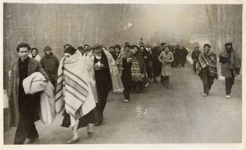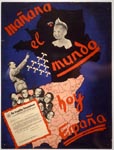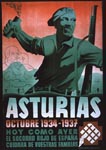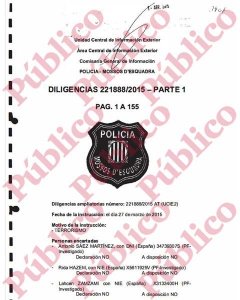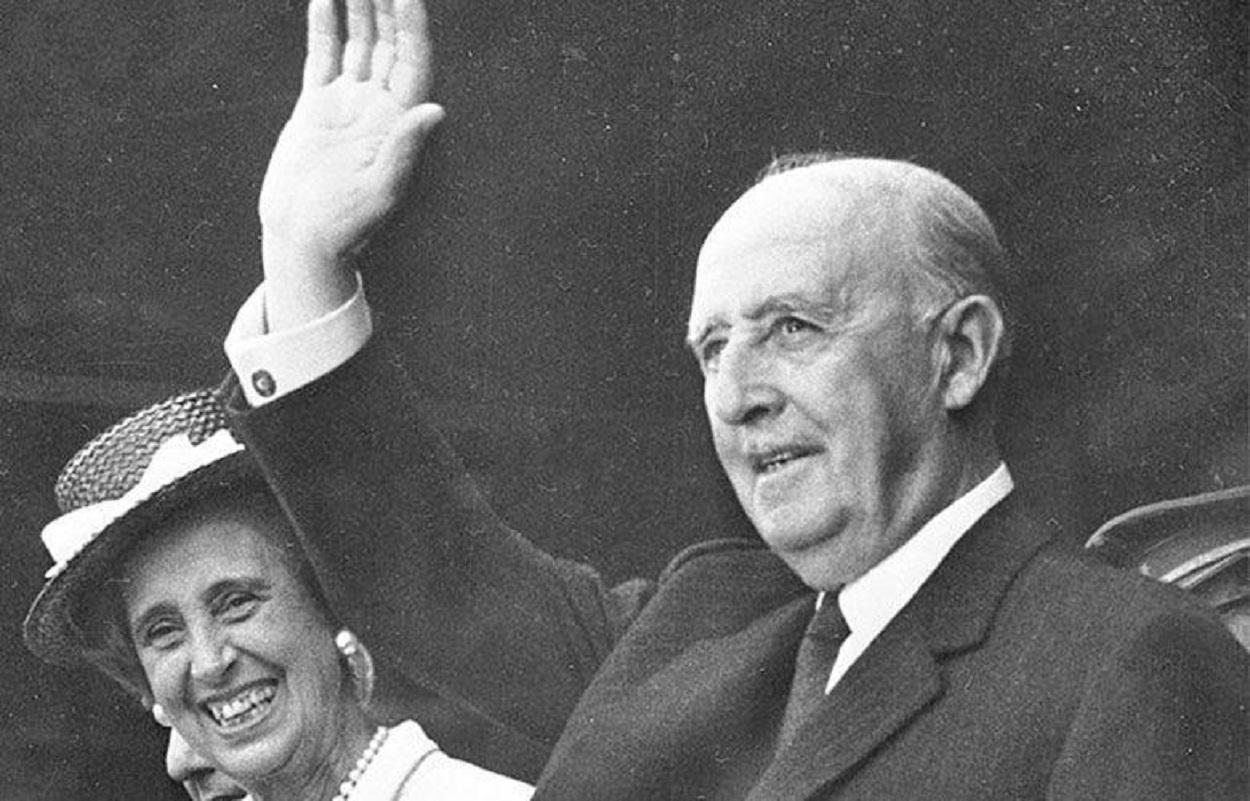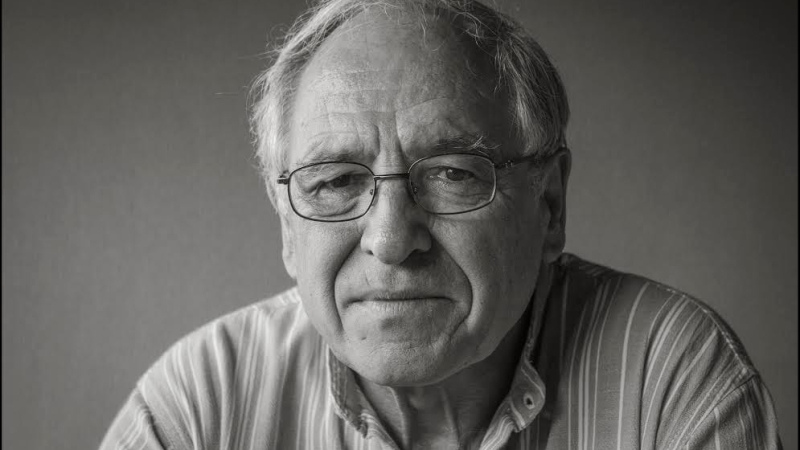Pere Fortuny was just six years old in 1939 when he first visited the Fossar de la Pedrera in Montjuïc Cemetery. As the bereaved family entered the old quarry, a Civil Guard roughly searched his mother and siblings. The young boy came upon a rough wasteland surrounded by limestone cliffs, in the middle of which was a steep-sided pit, lined at the bottom with freshly dug earth. He’d been brought to say goodbye to his father who had been executed a few days before, one of the more than 1,700 victims killed by the Franco regime in Barcelona between 1939 and 1952.
After going into exile in France in February 1939, Josep Fortuny, the last Republican mayor of Mollet del Vallés, near Barcelona, had returned to Spain just a few weeks later, believing he had nothing to fear. He was immediately arrested, tortured and ended up imprisoned in La Modelo; despite numerous testimonies in his favor, he was court-martialed and shot on June 15, 1939.
A Mass Grave
Difficult to get to and visited by very few Barcelona residents, let alone tourists, the Fossar de la Pedrera (the Mass Grave of the Quarry) is a peaceful and strangely beautiful place, concealed from the rest of Montjuïc and the cemetery by cliffs formed by quarrying. It was initially established as a common grave for the poor sometime after the cemetery was founded in 1883 but became a place of infamy in 1939, for this is also the mass grave of the victims of Francoism in Barcelona. After years of campaigning by the families of the victims, spearheaded by Pere Fortuny, in 1985, the site was redesigned and dignified as a memorial and today functions as a space of memory for all sides of the anti-Francoist opposition, and is undoubtedly the most remarkable of such sites in Spain.
Contrary to popular belief in Barcelona, only eight people were actually shot by the Franco regime at Montjuïc Castle, although thousands were imprisoned in the fortress. In most cases, condemned prisoners were sent out in trucks in the early morning from La Modelo Prison, the castle and elsewhere to the Camp de la Bota (today’s Forum), the Franco regime’s preferred killing ground. This was the fate of Josep Fortuny. Their bodies, some 1,700 in all, were then brought back to Montjuïc, dumped and covered with quicklime to ensure they rotted as quickly as possible. Until 1977, the site also continued to function as a common grave and in all some 4,000 bodies are buried here, political victims or otherwise.
In Memorium
As you walk up into the Fossar, you pass through three rows of square concrete pillars. One of the first is chiselled with these words in Catalan:
“In this quarry graveyard rest those who were shot, in the Camp de la Bota and other places, by the Fascist forces from the year 1939. For many of them we will never know their names but our tribute is for all.”
The second two rows are engraved with the names of the victims: 1939 and 1940 have the largest role call. Executions tailed off after the Battle of Stalingrad, when Franco began to fear the Allies might win. A study has shown that more than 70 percent were married, most with young children, which may also explain why they did not try to leave before the fall of Barcelona. The death of the major wage-earner, which most of these men would have been, in "the Years of Hunger" of 1940 Spain would have been extremely difficult to overcome for most families, compounded by the fact that they would have also been tarnished and subject to an economic and social boycott as being "red" families. More than 90 percent were accused, amongst other crimes, paradoxically of "military rebellion" against the military rising led by Franco and other generals.
The names on the columns are organized by year and then in alphabetical order by first surname. Each name was a life, with a family and friends. One story is that of Carles Flix Morera, a European bantamweight champion from Gràcia. Flix formed part of a whole generation of brilliant Barcelona boxers at a time when the sport was king amongst the city’s working class. At the beginning of the Spanish Civil War in July 1936, Flix had his flashy motor car requisitioned by the militias much to his annoyance. He later became a bodyguard of Catalan president Lluís Companys, with whom he left Barcelona for the French frontier on the morning of January 24, 1939. Believing he had nothing to fear—he always said he’d never hit anybody outside the ring—he elected not to cross into France and instead returned to Barcelona in February of that year. Back in the city, hearing that the Francoist police were looking for him, he presented himself at the police station in Via Laietana, where he was brutally tortured, accused of being himself “a torturer of the SIM,” the notorious Republican secret police, and condemned to death. He was executed in the Camp de la Bota on March 2, 1939, at the age of 31. It seems inconceivable that a SIM agent would voluntarily return to Barcelona and hand himself over. The most likely explanation is that he was denounced by a local Falangist as revenge for Flix, a handsome Don Juan, having an affair with his wife. Such denunciations were rife during the 1940s in Spain as a way of settling personal scores.
As you enter the Fossar itself on your left, there is an understated tribute to those who died in the Holocaust, with small stone blocks bearing the names of ten camps, piled with stones, as Jewish custom dictates: Bergen-Belsen, Buchenwald, Belzec, Sobibor, Dachau, Auschwitz, Treblinka, Majdanek and Mauthausen; the latter being the camp where most Spaniards died. Facing this memorial is a monument to those who sacrificed themselves for freedom in Catalunya. Above this on a raised terrace is a monument in the form of a cypress to “the men and women of the CNT who died for the social revolution,” one of the very few memorials to anarchism in Barcelona.
Among those who were shot at Montjuïc Castle by the Franco regime was Lluis Companys, the last president of the Generalitat de Catalunya during the Civil War. Companys went into exile in February 1939, but was captured by the Gestapo and sent back to Spain. After a summary trial, he was executed on October 15, 1940. His body was to be dumped in the mass grave, but was rescued just in time by his sister who somehow, perhaps by bribery, managed to place it in a niche. Companys’ remains were moved to the Fossar in 1985, when it was dignified as a memorial garden, and placed in a tomb surrounded by an ornamental pond.
At the back end of the Fossar against the cliffs is a remarkable and moving array of memorial stones to foreign and Spanish Republicans, each of which tells its own story. The largest number are to men shot in the Camp de la Bota and buried here. There are also several tributes to Catalans who died at the front (Huesca, Ebro, Extremadura). One monument reminds us that more than 7,000 of the some 35,000 International Brigaders who fought for the Spanish Republic were Jewish. There are also individual monuments to the German and Austrian International Brigaders who were killed in Spain. There is a plaque dedicated to the Marquis, the guerrilla fighters, who died fighting against Franco from 1939 to 1955. A surprising one perhaps for non-Spaniards is the sculpture in homage to the Masons persecuted by Francoism.
According to staple Francoist propaganda, the Republican government was a Jewish-Communist-Masonic conspiracy: being a Freemason became a prescribed activity and many members were imprisoned or shot. Franco himself was paranoidly obsessed with the Masons, and regularly wrote anti-Masonic articles for the press under the pseudonym of Jakim Boor. He also proclaimed: “The whole secret of the campaigns unleashed against Spain can be explained in two words: masonry and communism...we have to extirpate these two evils from our land.” Dotted among these political tributes and memorials to the common dead, are sad crosses to unbaptized children, who were not allowed burial in the main cemetery, a reminder of Catholic practice under Franco.
Getting There
The easiest way is to get to the cemetery by public transport is to take bus number 21 from Av. Paral·lel (every 20 minutes on weekdays and 30 on Sundays) starting in front of Teatre Victoria which drops you nicely at the cemetery gates. Access to Fossar de la Pedrera itself is only through the cemetery. Follow signs once you arrive or pick up a free plan from the cemetery offices at the main entrance.
More problematic is the journey back. For the bus, leave through the main entrance (where the bus dropped you) and make your way under the insalubrious bridge immediately facing you. Once out from the bridge, cross diagonally to the other side. The bus stop is 30 meters along the narrow pavement. Note, calling a taxi to pick you up from the cemetery can take as long as 30 minutes and so is an expensive option.
by Nick Lloyd
Originally published April 2013, updated July 9, 2022.








